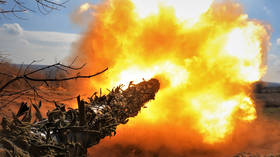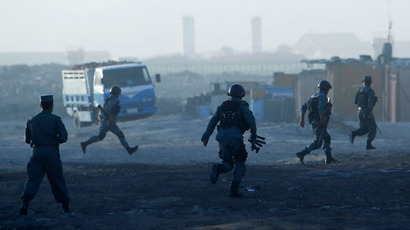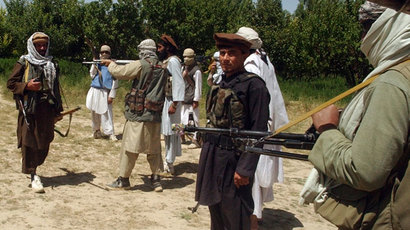Pentagon spends $34 million on unused military base in Afghanistan
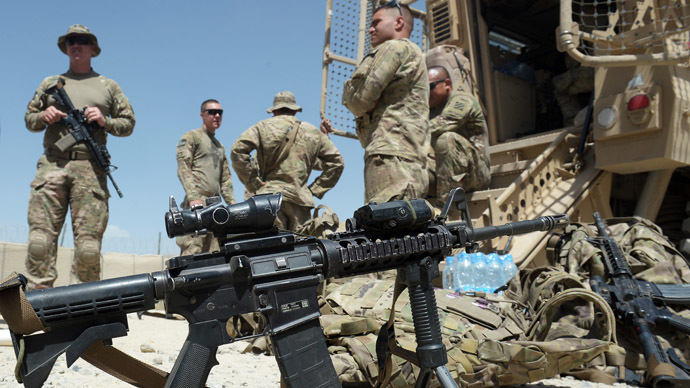
The US military has constructed a $34 million building in southwestern Afghanistan, which it initially planned to use as its headquarters. But as the US scales back its troops, the brand new 64,000 square foot building may soon be demolished.
“What the hell were they thinking? There was never any justification to build something this fancy,” a two-star Army general based in Afghanistan told the Washington Post on condition of anonymity.
In 2009, the Pentagon and military officials based in South Carolina issued contracts for the construction of the two-story building, which they planned to use as headquarters for the Marine forces at Camp Leatherneck in southern Afghanistan.
Military commanders protested its construction, arguing that there was no use for the extravagant structure. Former Maj. Gen. Richard P. Mills argued that his modest headquarters were sufficient for the job. Other Marine officers also objected to the plans, but their concerns were disregarded.
The Pentagon awarded a private British firm, AMEC Earth and Environment, a contract to build the headquarters. Construction began in November 2011, even though President Obama had already announced the end of the surge and the impending withdrawal.
The extravagant project was completed this year, costing the US government $34 million – even though the military now has no plans to use it. The two-story structure, which is larger than a football field, features a briefing theater, large offices, 110-volt outlets for US appliances, luxurious chairs and furniture, equipment to wage modern war, and powerful air conditioning and heating systems which require costly amounts of electricity.
John F. Sopko, the special inspector general for Afghanistan’s reconstruction, told Defense Secretary Chuck Hagel in a letter that the structure is “the best constructed building I have seen in my travels to Afghanistan.”
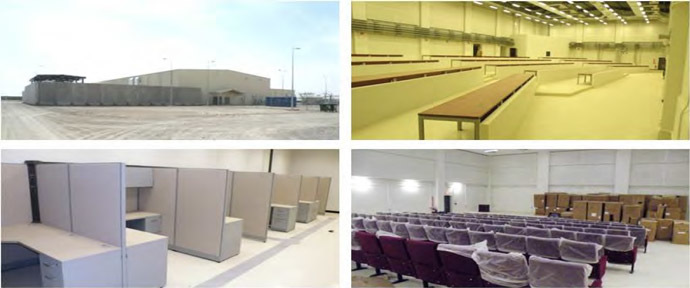
But the construction of this building represents a common problem that can be seen throughout Afghanistan: the US has wasted millions of dollars on buildings that stand empty or incomplete as the military scales back its troops.
“Unfortunately, it is unused, unoccupied, and presumably will never be used for its intended purpose,” Sopko wrote. “This is an example of what is wrong with military construction in general - once a project is started, it is very difficult to stop.”
The US must now decide whether to hand the facility over to the Afghan army or demolish it. Since the huge windowless building is equipped for US appliances and requires expensive fuel purchases for its generators, it may be difficult for Afghans to sustain.
“The building will probably be demolished,” the two-star Army general said.
But the military headquarters, which has the capacity to hold 1,500 personnel, is just one of many expensive structures that will never serve its intended purpose. The US military recently spent $45 million on a facility to repair armored vehicles in Kandahar province, which is now being used as a location to sort through equipment being shipped out of the country, the Post reported. Last year, the State Department also abandoned plans to turn a large building into a consulate - after spending more than $80 million on a 10-year lease.
The wasteful spending on extravagant structures in Afghanistan closely mirrors US spending in Iraq. The US spent $60 billion to rebuild Iraq, but a final report from Special Inspector General for Iraq Reconstruction Stuart Bowen concluded that more than $9 billion was wasted.
When US troops withdrew from Iraq, they left behind a plethora of abandoned projects, including a 3,600-bed prison that cost $40 million, a $165 million children’s hospital that remains unused, and a $108 million wastewater treatment center that remains unfinished. Building materials worth $1.2 million were abandoned when fears of violence prompted the US to abandon construction of the prison.
In Afghanistan, the US is now facing many of the same problems.
And with a $34 million base standing unused and equipped for
modern warfare, the US must decide whether to hand over the
structure or destroy it.
“Both alternatives for how to resolve this issue are troubling – destroying a never-occupied and never-used building or turning over what may be a “white elephant” to the Afghan government that it may not have the capacity to sustain,” Sopko wrote, relaying his concerns to the defense secretary that he is "deeply troubled that the military may have spent taxpayer funds on a construction project that should have been stopped."









